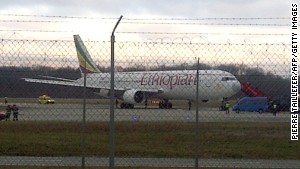As Africa's tourism sector gears up, demand for air travel is also rising. The continent will see air traffic growth soar 5.7% annually over the next two decades, beating the global average of 5%, according to estimates by commercial air-plane maker Boeing. In addition, air cargo will also grow 6.6% annually over the next 20 years, compared to the global average of 5%, while the continent's air fleet will rise 4% each year during the period, again beating world average of 3.6%, the plane-maker forecast.
In all, the African continent will take deliveries of 1,070 new aircraft with a combined market value of USD 130 billion by 2032, as business and leisure air travel remains at elevated levels in the region. "Growth to and from other emerging markets is expected to lead the way, as airlines both in Africa and other emerging market regions are planning to increase inter-regional connectivity," Boeing said in its forecast for African air travel. Europeans will remain strong visitors to Africa, as business and leisure ties improve and African states make a more concerted effort to improve their air links to other economies.

Africa has also seen a 36% increase in arrivals from the United States over the past five years, with nearly one million US visitors in each of the past three years, according to Office of Travel & Tourism Industries for the International Trade Administration at the US Department of Commerce. "In fact, for the last three years, the Africa/Middle East region has accounted for nearly 10% of the overseas travelers," said Ron Erdmann, deputy director of the US Department of Commerce in a report. "This is a peak for the region, which has seen its share increase four percentage points since 2006."
More than 500,000 Chinese tourists visited Egypt, South Africa, Ethiopia, Algeria and Kenya in 2012, as Africa also emerges as a major tourist destination for other emerging markets. "Prospects for intra-African growth are also rising. Airlines in the region are exploring new business models and development of intra-regional hubs," Boeing said in its report. "Growth in pan-African airline networks can bring the efficiency of air travel to the continent's transportation system. The flexibility of aviation networks and the relatively low cost per network kilometre make aviation infrastructure investment very attractive compared to investment in other modes."
INTRA-TOURISM:
While Africa is home to some of the diverse and breath-taking sceneries on the planet, including deserts, rivers, savannahs and wildlife, it has not tapped its true potential. The continent accounts for 20.4% of the world's land area, but receives only about 3% of world tourism receipts and 5% of tourist arrivals.
"To maximize Africa's tourism potential, critical investments are needed in key infrastructure sectors, e.g., transport, energy, water and telecommunications," according to professor Mthuli Ncube, chief economist and vice president, African Development Bank Group, adding that intra-African tourism offers some low-hanging fruits to unlock revenues.
"It is significant that on average, African citizens require visas to visit 60% of African countries. Loosening of visa restrictions would go a long way towards boosting business and leisure traveler flows, thereby contributing to the economic and social development of local economies and communities."
But the continent's prominence as a tourism destination is growing. Africa's international tourism arrivals shot up to 63.6 million in 2012, compared to 37 million a decade ago. Meanwhile, tourism receipts stood at USD 43.6 billion in 2012, with key destinations such as Morocco, Egypt, Madagascar, Seychelles and South African leading the way. Most crucially, travel and tourism employed 8.2 million people in Africa, highlighting its strength as a strong job creator.

TAILWINDS:
The International Air Transportation Association says that African airlines international air travel rose 5.5% in 2013, slower than 2012 growth of 7.5%, primarily due to slow down in South Africa and political turmoil in North Africa. "Overall, the demand backdrop for carriers in the region is strong, with robust economic growth of local economies and continued development of internationally trading industries. But some parts of the continent have shown weakness, including the South African economy, which has recently experienced a slowdown," IATA said in its latest report.
"There has also been some slowdown in regional trade growth. These developments have placed downward pressure on growth in demand for international air travel, which slowed in H2 2013 compared to earlier in the year." But there has been a concerted effort to improve the continent's tourism infrastructure, from the 40,000 new hotel rooms being built in the continent, to the improved air connections from Gulf, European and African airlines such as Ethiopian, South African airways. Air travel is also hindered by two key factors. First is safety: In 2012, African airlines had one accident (with a Western-built jet aircraft) for every 270,000 flights. Globally, the industry average was one accident for every five million flights, according to IATA data.
Secondly, heavy taxes on fuels, tickets and lack of liberalized routes is holding back the development of low-cost carriers. "Aviation connectivity links the continent's businesses to global markets. And that generates economic opportunities. But, if aviation charges and taxes are too high, its ability to be an economic catalyst is compromised," IATA said.


